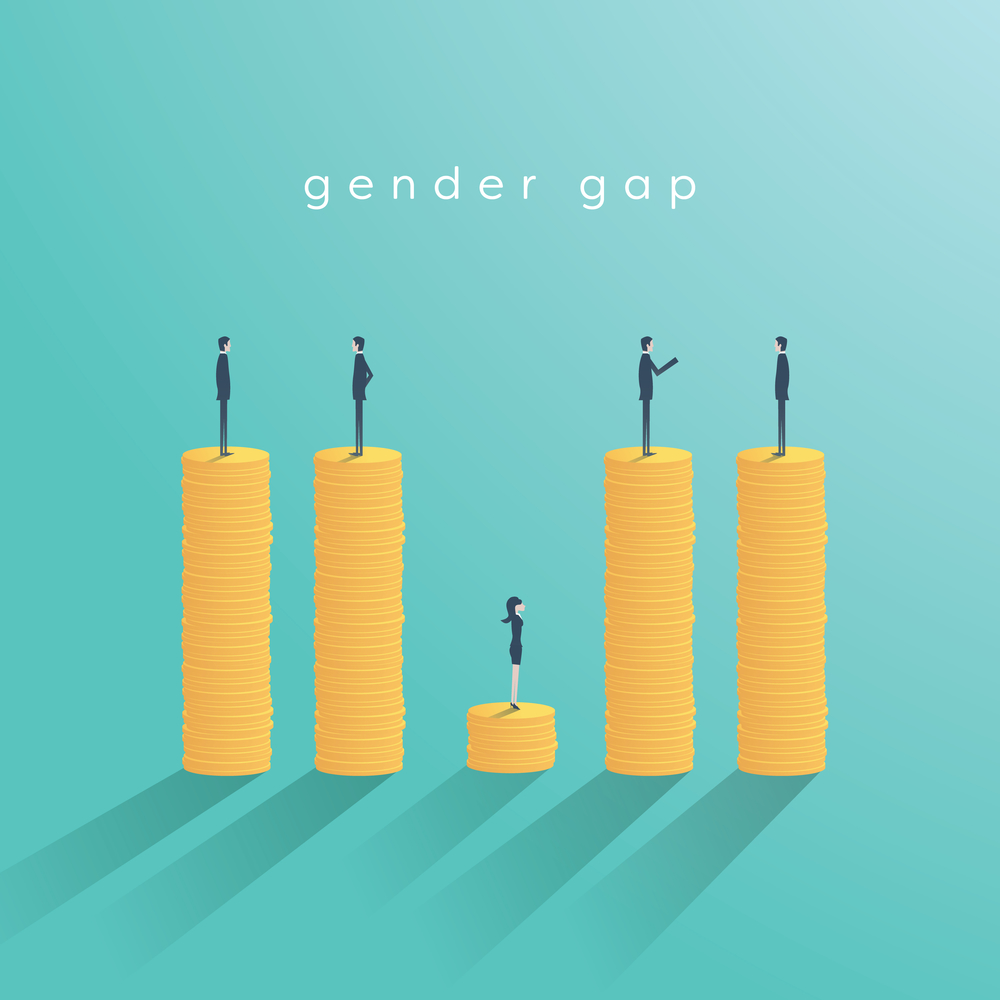Equal Pay Day is an important opportunity to recognize and broadcast the persistent pay gap between men and women in the workplace. Making only $0.79 for every dollar a man makes on average and even less if a minority, women are still unfairly paid less for equal work. The focus of Equal Pay Day each year is generally on wages and traditional jobs, but the pay gap isn’t exclusive to hired positions.
In fact, a similar gap exists for self-employed women. A recent study by FreshBooks, an accounting tool popular with freelancers, showed that women who work for themselves make an average of $56,184 per year, compared to $77,540 made by men. HoneyBook found that in creative fields, the gap was as high as 32%.
In the FreshBooks report, a full 20% of women surveyed said they charge less so they can acquire and keep clients when competing with male freelancers in the same field. This happens in almost all corners of the gig economy. Female Uber drivers charge less than male Uber drivers and, according to invoicing software company Bonsai, women are paid late or underpaid on their invoices far more often than men.
So how can women ensure equal pay in freelance work? Let’s look at what it takes to ensure fair rates and prompt payment.
Closing the Gap in Freelance Earnings
Unlike in the traditional workforce, freelancers set their own rates, so why are women still making significantly less than men? A lot of it is a carryover effect from that traditional workforce’s pay gap. Many freelancers start with rates comparable to what they made in their old job.
In effect, because of the systemic underpayment of women for like-work, they pitch their services at a lower rate than men would based on what they think should make. To address this, women must coordinate and communicate with other freelancers to better understand what a fair market rate is for their services. Pricing freelance services is difficult for anyone who goes it alone, but without a clear baseline against which to measure the value of those services, women are undervaluing their own skills.
While this is far from the only issue—the same issues that lead companies to pay women less than men apply when choosing a freelancer for a project—addressing it can help set the agenda in negotiations and put you on better footing when bidding on a project.
Asking for More
Because freelancers so frequently base their rates on previous experience and a perception of their own value, they undercharge. Freelance rates are frequently higher than traditional salaries because of the flexibility the work arrangement provides and the added financial burden of running a business. Women who have until now based their rates on those factors should ask for more. Some tips for doing this include:
- Set a Minimum Rate: Never take less than you feel is your minimum rate. This should be more than just what you made at your last job. It should factor in business expenses, hours available to work (especially if less than the traditional 40), and your taxes. If unsure, factor in an additional 20% to 30% to account for a gap in your prior salary as well.
- Charge Based on Value: Hourly rates, when factored accordingly, can compensate you well, but still lock you into a time-for-money scenario, which caps your earning potential. Project-based work that accounts for the value of the finished good you provide can rapidly grow this potential. Move people away from thinking about how quickly you can get something done and toward “is this thing worth the money being charged?”
- Start Higher: If your minimum rate is $60/hour, start the negotiations at $80. Not only will some prospective clients try to lower the rate by default (regardless of what they can afford), but a higher starting point will give you ample breathing room to achieve your target rate and possibly more.
- Bid and Invoice Under a Company Name: The same Bonsai study that showed women are 30% more likely to be paid late on their invoices also showed that those who bill under a company or team name are less likely to be paid late. This can benefit you in invoicing as well as bidding, partially negating gender bias in the proposal review process.
Additionally, there are many situations in which freelancers are already underpaid. Women should identify these situations and make it clear what their compensation expectations are. Here are some common scenarios resulting in underpayment:
- Rushed work throws off an existing project or schedule. When a deliverable is needed on short notice, rates should increase to compensate for the adjustment and additional hours required.
- Excessive meetings cause lost hours. Bill hourly for meeting time, and if working on a project basis, include an estimate for these meetings in advance and a clause for excessive meetings with a comparable rate.
- General scope creep goes unaddressed. This is a problem faced by all freelancers, but for women in particular it can be more pervasive. Be quick to identify scope creep and renegotiate the rate for a project if it starts to expand beyond original expectations.
In addition to persistent invoicing to avoid late payment (which, again, is far more common for women than for men), direct and carefully documented steps like those above can help you to increase rates, charge for all applicable time, and level the playing field with male freelancers.




